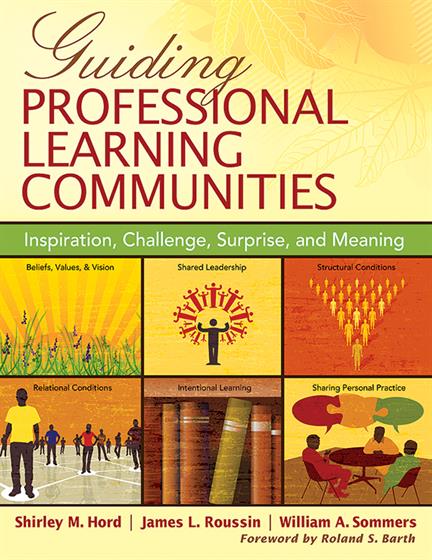Foreword by Roland S. Barth
Acknowledgments
About the Authors
Part I. Introduction: Things You Need to Know Before You Use This Book
Part II. Words to the Wise: Before You Begin
Part III. Learning Opportunities: Tools, Tasks, Deep Thinking, and a Wee Bit of Trivia
Learning Opportunity 0.1: A Crisp Rationale for PLCs
Learning Opportunity 0.2: Benefits to Staff and to Students: A Flamingo Dialogue
Learning Opportunity 0.3: Research-Based Components of a PLC: A Jigsaw
Component 1: Shared Beliefs, Values, and Vision
Overview and Current Thinking
Learning Opportunity 1.1: My Personal Learning Compass
Learning Opportunity 1.2: Creating a Culture of Academic Optimism
Learning Opportunity 1.3: Prioritized Abandonment
Learning Opportunity 1.4: Discovering Our Core Values
Component 2: Shared and Supportive Leadership
Overview and Current Thinking
Learning Opportunity 2.1: Friendly Feedback for the Principal
Learning Opportunity 2.2: A Guide for Making Decisions
Learning Opportunity 2.3: Learning Conversations
Learning Opportunity 2.4: Planting the PLC in a Strong Culture
Learning Opportunity 2.5: Positive Deviance
Learning Opportunity 2.6: Distributed Leadership
Component 3: Structural Conditions
Overview and Current Thinking
Learning Opportunity 3.1: Time and Other Essential Ingredients
Learning Opportunity 3.2: Assessing the Effectiveness of PLC Meetings
Learning Opportunity 3.3: Assessment for PLC Development
Learning Opportunity 3.4: The Learning Community’s WORK
Learning Opportunity 3.5: Identifying a PLC Learning Goal
Learning Opportunity 3.6: Traffic Light Indicator
Component 4: Relational Conditions
Overview and Current Thinking
Learning Opportunity 4.1: The Importance of Trust in the PLC
Learning Opportunity 4.2: Group Development
Learning Opportunity 4.3: Mapping Collaborative Interactions
Learning Opportunity 4.4: Relational Conditions
Learning Opportunity 4.5: Building Consensus
Learning Opportunity 4.6: Defusing Conflict in a PLC
Component 5: Intentional Collective Learning and Its Application
Overview and Current Thinking
Learning Opportunity 5.1: Leadership and the Enemies of Learning
Learning Opportunity 5.2: Twelve Principles for Effective Adult Learning
Learning Opportunity 5.3: The PLC Action Plan
Learning Opportunity 5.4: Listening Together in the PLC
Learning Opportunity 5.5: Using the Stages of Concern to Connect Professional Learning to the Classroom
Learning Opportunity 5.6: Using the Levels of Use (LoU) to Connect Professional Learning to the Classroom
Learning Opportunity 5.7: PLC Growth Development Profile
Component 6: Sharing Personal Practice
Overview and Current Thinking
Learning Opportunity 6.1: “Foursight” for Learning: Four Focus Areas to Consider in Monitoring for Student Learning
Learning Opportunity 6.2: Four Conversations
Learning Opportunity 6.3: Coaching: Transferring Adult Learning to the Classroom or What’s Learned Here Leaves Here
Learning Opportunity 6.4: Reflection Protocols
Learning Opportunity 6.5: Video Sharing Protocol
Part IV. Bringing Closure
Resource A
References
Index





